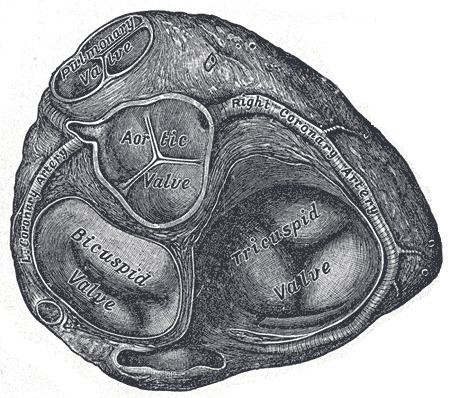TA A12.2.03.201 | Dorlands/Elsevier a_61/12154070 FMA 50040 | |
 | ||
Branches anterior interventricularcircumflex(ramus intermedius) Latin arteria coronaria sinistra | ||
The left coronary artery (abbreviated LCA) is an artery that arises from the aorta above the left cusp of the aortic valve and feeds blood to the left side of the heart. It is also known as the left main coronary artery (abbreviated LMCA) and the left main stem coronary artery (abbreviated LMS).
Branching
It typically runs for 10 to 25 mm and then bifurcates into the anterior interventricular artery (also called the left anterior descending (LAD) and the "Widow maker") and the left circumflex artery (LCx). Sometimes an additional artery arises at the bifurcation of the left main artery, forming a trifurcation; this extra artery is called the ramus or intermediate artery.
The part that is between the aorta and the bifurcation only is known as the left main artery (LM), while the term 'LCA' might refer to just the left main, or to the left main and all its eventual branches.
A "first septal branch" is sometimes described.
